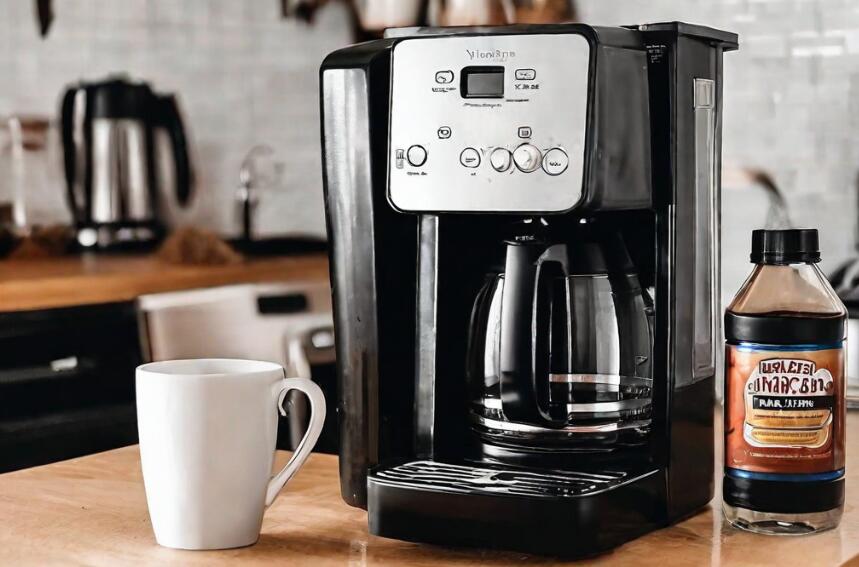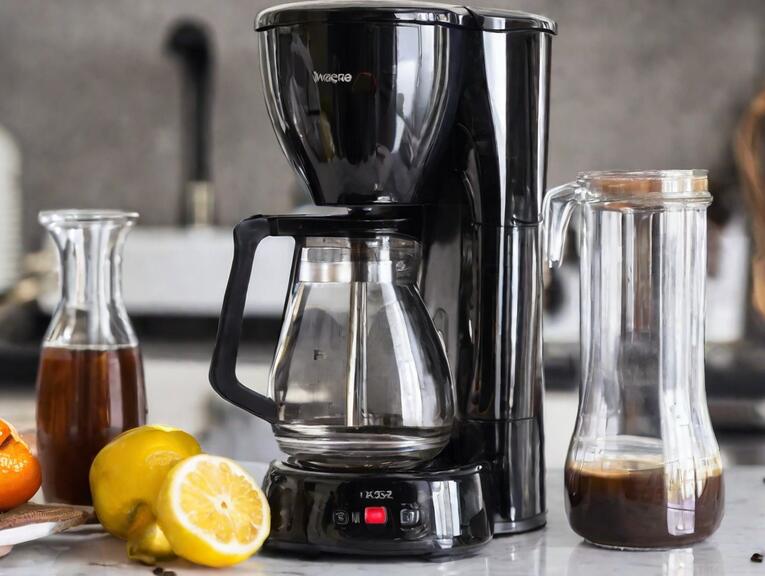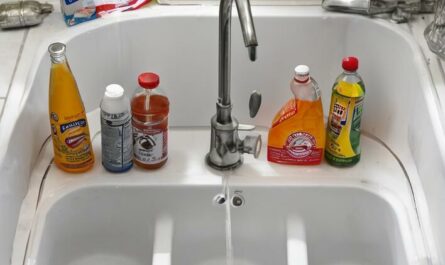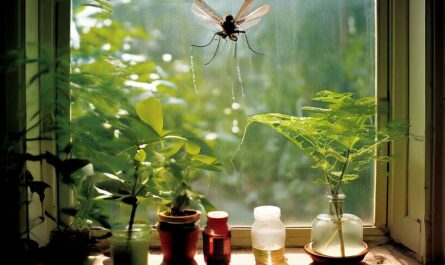Did you know that a dirty coffee maker can negatively impact the flavor of your morning brew? Over time, coffee oil residues and mineral deposits can accumulate within your coffee maker, affecting the taste and quality of your coffee. That’s where regular cleaning comes in. And when it comes to an effective and natural cleaning agent, vinegar takes the spotlight. This article will provide a step-by-step guide for cleaning your coffee maker with vinegar. So you can enjoy a fresh and delicious cup of coffee every time.

Signs of Your Coffee Maker’s Need for Cleaning
Coffee makers are designed to extract the rich flavors from coffee beans, but over time, residues can build up and affect the taste. Here are some signs that indicate it’s time to clean your coffee maker:
- Coffee tastes bitter or off-flavor.
- The brewing process takes longer than usual.
- The machine starts to produce strange noises.
- The coffee maker has visible mineral deposits or stains.
Regular cleaning is essential to maintain the optimal performance of your coffee maker and ensure that you’re getting the best-tasting coffee every morning.
Why Vinegar is the Ideal Cleaning Solution
Vinegar is a versatile and effective cleaning agent, and it’s no different when it comes to cleaning your coffee maker. Here are a few reasons why vinegar is the ideal solution:
- Natural and Safe: Vinegar is a natural ingredient that is safe to use around food and is non-toxic.
- Acidic Properties: The acidity of vinegar helps dissolve mineral deposits and remove coffee oils that can accumulate in your coffee maker.
- Cost-Effective: Vinegar is an affordable and readily available cleaning solution.
Compared to other cleaning agents, vinegar provides an effective and budget-friendly option for maintaining the cleanliness of your coffee maker.
Preparing to Clean Your Coffee Maker with Vinegar
Before jumping into the cleaning process, it’s important to gather the necessary materials and take some safety precautions:
Materials Needed:
- Distilled white vinegar
- Water
- Clean cloth or sponge
- Dish soap
- Soft brush or toothbrush
- Paper towel or clean cloth
Safety Precautions:
- Ensure your coffee maker is unplugged and cooled down before cleaning.
- Read the manufacturer’s instructions for any specific cleaning recommendations.
- Avoid using abrasive materials that can scratch the surfaces of your coffee maker.
By preparing in advance and taking the necessary safety precautions, you can clean your coffee maker efficiently and safely.
The Step-by-Step Vinegar Cleaning Coffee Maker Process
Now that you have gathered the necessary materials and taken safety precautions, let’s dive into the step-by-step process of cleaning your coffee maker with vinegar:
Step 1: Mixing the Vinegar Solution
To create the vinegar-cleaning solution, follow these steps:
- Mix equal parts of distilled white vinegar and water. For example, if you’re using 1 cup of vinegar, mix it with 1 cup of water.
- The vinegar-water ratio may vary depending on the specific instructions provided by your coffee maker’s manufacturer. Always refer to the user manual for any recommended ratios.
Pro Tip: Use distilled white vinegar instead of other types of vinegar, as it is colorless and less likely to leave behind any residue or odor.
Step 2: Running the Vinegar Solution Through Your Coffee Maker
Now that you have the vinegar solution ready, it’s time to clean your coffee maker:
- Empty any remaining water from the water reservoir.
- Pour the vinegar solution into the water reservoir.
- Start a brewing cycle as you would when making a cup of coffee.
- Allow the vinegar solution to run through the coffee maker and into the carafe.
Note: The vinegar solution may have a strong odor, but don’t worry, it will dissipate during the cleaning process.
Step 3: Completing the Brew Cycle and Flushing the System
After running the vinegar solution through your coffee maker, follow these steps to complete the cleaning process:
- Once the brewing cycle is complete, turn off the coffee maker and let it sit for about 15-30 minutes to allow the vinegar solution to work on removing any built-up residues.
- After the waiting period, discard the vinegar solution from the carafe and rinse it thoroughly with water.
- Fill the water reservoir with fresh water, ensuring that it reaches the maximum level indicated.
- Start a brewing cycle with only water. This will help flush out any remaining vinegar and residue from the system.
Repeat the water cycle a few times until you no longer detect any vinegar smell. This ensures that your coffee maker is thoroughly rinsed and ready for use.
Step 4: Cleaning Removable Components
In addition to cleaning the internal parts of your coffee maker, it’s important to pay attention to the removable components:
- Remove the carafe, filter basket, and any other removable parts.
- Wash them with warm, soapy water, using a sponge or cloth to remove any stains or residues.
- Use a soft brush or toothbrush to clean hard-to-reach areas or stubborn stains.
- Rinse the components thoroughly with water to remove any soap residue.
Ensure that all the removable components are completely dry before reassembling them back into the coffee maker.
Step 5: Reassembling and Performing a Final Water Brew Cycle
Now that you have cleaned the internal and external parts of your coffee maker, it’s time to put everything back together:
- Reassemble the coffee maker, ensuring that all components are securely in place.
- Fill the water reservoir with fresh water.
- Start a final brewing cycle with only water. This helps remove any remaining traces of vinegar or residue.
Once the final water cycle is complete, your coffee maker is now clean and ready to brew a fresh and flavorful cup of coffee.
Safety Tips When Using Vinegar in Coffee Makers
While vinegar is a safe and effective cleaning agent, it’s important to keep a few safety and maintenance tips in mind:
- Store vinegar in a cool and dark place, away from direct sunlight.
- Avoid mixing vinegar with other cleaning agents, as this can create harmful fumes.
- Regularly clean your coffee maker to prevent the buildup of coffee oils and mineral deposits.
By following these tips, you can ensure the longevity of your coffee maker and maintain the quality of your coffee.

Common Mistakes to Avoid When Cleaning with Vinegar
To make sure your cleaning process goes smoothly, here are some common mistakes to avoid:
- Neglecting to read the manufacturer’s instructions: Always refer to the user manual for any specific cleaning recommendations.
- Skipping the rinsing step: Thoroughly rinsing your coffee maker after the vinegar cleaning process is essential to remove any residual vinegar taste.
- Using abrasive materials: Avoid using abrasive materials that can damage the surfaces of your coffee maker.
By avoiding these mistakes, you can ensure a successful and effective cleaning process.
Alternatives to Vinegar for Cleaning Your Coffee Maker
If you prefer not to use vinegar or want to explore other options, here are a few alternative cleaning solutions:
- Lemon Juice: Lemon juice contains citric acid, which can effectively remove mineral deposits. Follow a similar process as cleaning with vinegar, using equal parts of lemon juice and water.
- Baking Soda: Baking soda is a natural and gentle abrasive that can remove stains and odors. Mix baking soda with water to create a paste, then scrub the coffee maker’s surfaces with a soft brush or cloth.
Remember to thoroughly rinse your coffee maker after using alternative cleaning solutions to prevent any residual taste or odor.
How Often Should You Clean Your Coffee Maker with Vinegar?
The frequency of cleaning your coffee maker with vinegar depends on your usage and water quality. As a general guideline, it’s recommended to clean your coffee maker with vinegar every 1-3 months. However, if you notice any signs of buildup or changes in coffee taste, consider cleaning it more frequently.
Conclusion
Cleaning your coffee maker with vinegar is a simple and effective way to maintain the optimal performance and taste of your coffee. By following the step-by-step process outlined in this guide, you can easily remove coffee oil residues and mineral deposits, ensuring that every cup of coffee is fresh and delicious.
FAQs
1. Can I Clean My Coffee Maker with Apple Cider Vinegar?
While white vinegar is the most commonly recommended option for cleaning coffee makers, apple cider vinegar can also be used as an alternative.
The cleaning process is similar, using equal parts of apple cider vinegar and water. However, keep in mind that apple cider vinegar may leave behind a slight taste or odor compared to white vinegar.
2. Is it Safe to Use Vinegar to Clean a Coffee Maker if I Have a Septic System?
Yes, using vinegar to clean your coffee maker is safe even if you have a septic system. Vinegar is a natural and biodegradable cleaning agent, making it a suitable choice for environmentally conscious individuals.
However, it’s always a good idea to consult with a professional or consider any specific septic system guidelines if you have concerns.
3. Will Cleaning My Coffee Maker with Vinegar Affect the Taste of My Coffee?
Cleaning your coffee maker with vinegar should not affect the taste of your coffee if you thoroughly rinse the machine afterward.
It’s essential to run water cycles after the vinegar cleaning process to flush out any remaining vinegar or residue. This ensures that your coffee is free from any unwanted taste or odor.






